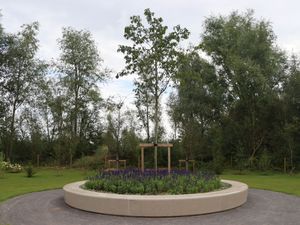How the West Midlands' coal miners shaped the modern world
Trevor Matthews shakes his head in disbelief at the energy crisis facing Britain at the moment.
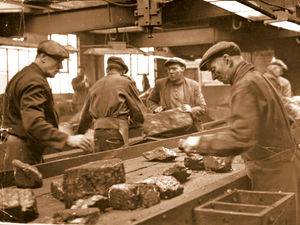
"I despair at the governments of this country, they are all the same," he says with a grimace.
"They talk about the security of the country, but surely the security of the country depends on having sufficient power?"
Sat in his Claverley home, surrounded by books about the golden era of British industry, the retired mining engineer ponders what has been lost – and speaks of his determination that it should be remembered in years to come.
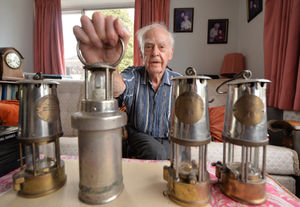
Few people much under the age of 40 will have any recollection of what the towns and villages around the Cannock Chase would have looked like a couple of generations ago. It is now almost 30 years since the area's last pit, Littleton Colliery, closed in December 1993, by which time the mining communities which had dominated the area for generations had largely been lost.
For decades, the skyline of Huntington, near Cannock, was dominated by "Mae West", two giant mounds of mining waste which towered above the small village which practically owed its existence to the collieries which surrounded it. The winding wheel of Littleton mine loomed over the village's tightly-packed terraced houses. Eight miles up the A5 in Essington, the once-thriving Hilton Main colliery is now a bland industrial estate.
Trevor, now 90, had been retired for six years when the last pit, Littleton Colliery, in Huntington, closed, but if you cut him, he would probably still bleed coal. Since then, he has written extensively about the industry for publications by the Cannock Chase Mining Historical Society, hoping that future generations will realise how coal has shaped our lives.
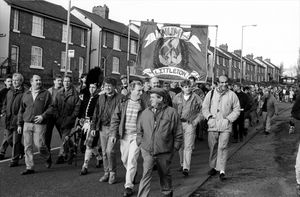
"If you think about it, the entire Industrial Revolution was built on coal, and the development of the steam engine," he says.
"So much of the technology we take for granted today is down to coal."
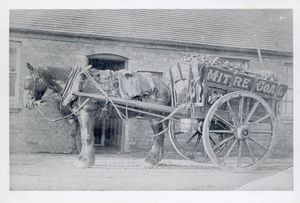
It is hard to argue otherwise, and this region has played a particularly important part in this. The modern iron and steel industry, which transformed the world in the 19th and 20th century, would never have existed were it not for the efforts of Dud Dudley and Abraham Darby in smelting iron with coke.
The railways, which connected the country like never before, would probably not have come about were it not for Thomas Newcomen's first steam engine in Dudley, not forgetting the later developments by James Watt and Matthew Boulton at Birmingham. Early cars also utilised steam power.
"Coal-mining shaped the area forever," he says. "Nothing else can ever have such a massive effect on the area."
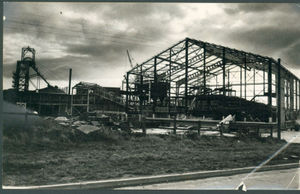
The Cannock Chase coalfield roughly encompassed a triangle from Brereton near Rugeley in the east, Essington in the west, and Pelsall, near Walsall. It was separated from the South Staffordshire coalfield, which defines the Black Country, by the Bentley fault, which is why traditionalists will argue that Willenhall is in the Black Country, but Walsall is not.
But while deep mining in the Black Country finished in the late 1960s, Mid-Staffordshire would be an important mining centre for many years to come.
The first mention of the use of coal on the Cannock Chase goes back as far as 1282, and in 1369 the Bishop of Lichfield granted two miners, John Hahywoode and John Mogge, rights to take coal out of Cannock Wood for a rent of £1 for the first year, and £1 10s thereafter.

To begin with, extracting loose coal from the surface would have made for easy pickings, but after a century or so miners would have needed to find a way of extracting the solid coal seam lying just beneath the surface. The solution? They found that the bony antlers from large deer were ideal for breaking up the coal seams.
But it was the development of the steam locomotive in the 19th century which saw the rapid expansion of the industry – not only was more coal needed than ever before, the emerging rail network also meant it could be quickly transported to every corner of the country.
By 1913, 73 million tons of British coal was exported, representing 80 per cent of all British exports.
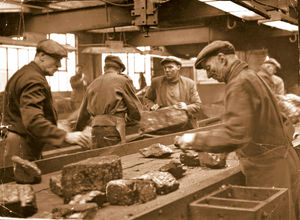
And as mining became big business, the surrounding community saw similar expansion: the population of Cannock rose from 2,913 in 1861 to 20,613 just 30 years later. New villages also sprang up – in 1921 there were just 39 people living in Featherstone, but this had grown to 1,095 by 1931.
Trevor Matthews' career began as a trainee at Hilton Main Colliery in 1951, and ended at Littleton, having risen to the post of assistant manager by the time he left in 1987.
He describes an exciting period in Britain's mining history, when new technology resulted in soaring productivity during the postwar boom, followed by decline as Britain moved away from coal in the 1970s and 80s.
Like many in the industry, he followed a relative, his uncle Bill Sherratt who was under-manager at Holly Bank Colliery.

As a young "shot firer", his job was to plant low-grade explosives into 5ft grooves cut into the coal face to break up the rock, ready for it to be dug out by the colliers.
By the time the mines were fully nationalised in 1947, there were 22 collieries operating in the area, producing more than 4.3 million tons of coal a year. Within 10 years, seven of these pits had closed, their reserves having been exhausted, but improved productivity saw annual coal production increase to 4.58 million tons.
July 1960 saw the opening of the Lea Hall Colliery "superpit", the first modern coal mine opened by the National Coal Board, to supply the adjoining new power stations. This ground-breaking new complex, with a conveyor belt linking the mine to one of the power stations, was the first of its kind and led to the rapid expansion of the town. The pit finally closed in 1991.

Despite having taken early retirement in 1987, Trevor says he never foresaw the closure of Littleton, and with it the end of mining in Staffordshire.
"There were quite a lot of coal reserves to the north," he says. "There was a lot of coal there, but instead we became dependent on imported energy."
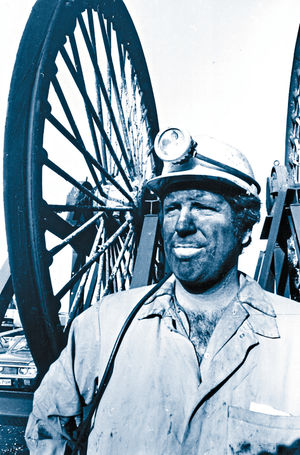
Mining at Littleton dated back to the sinking of the No. 1 shaft in 1877, although early efforts were hampered by flooding.
In the 1960s the colliery was modernised and equipped with skip winding, and Trevor says one of his proudest achievements was being involved with breaking the "magic million" tons a year in 1968.
"Lord Robens, the chairman of the National Coal Board, had devised a scheme for improving productivity by having a "spearhead face" at each colliery to demonstrate what was achievable, and encourage the other faces at the same pit to try to equal the same level of performance.

"I was the under-manager in the area of the pit which was chosen, and I am very pleased to say that we slightly improved on what seemed to be an ambitious target.
"Large capital expenditure was involved in improving the handling of large quantities coal in surface works, such as bunkers holding tons of coal which could load a 20-ton lorry in one minute." A rail line to the new Ironbridge B power station could also transport coal at speeds of up to 60mph.
Littleton appeared to have been given a reprieve in 1992, but the following year it succumbed to the national programme of pit closures after attempts to find a private buyer proved unsuccessful.
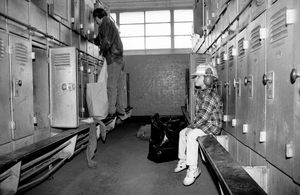
The site is now occupied by a school and housing, while the former spoil tip is now known as Littleton Leisure Park. A restored winding wheel is the centrepiece of a memorial garden which opened three years ago, along with a plinth bearing the names of 400 miners. Memorial stones have also been erected in the grounds of the Littleton Green Community School, to mark where shafts No. 2 and 3 were located.
Other memorials include the four statues of miners at Rugeley's Globe Island and at the end of High Street, Brownhills.
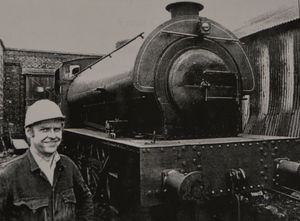
Trevor says it is so important that mining is remembered, not just for the impact it had on the world we live in today, but also for the sheer feat of achievement by the thousands of men who worked deep below the ground.
"The story of mining is one of human endeavour," he says.
"The world did not yield its 'Black Gold' without a struggle."


